#crude oil tanker
Text
Bosphorus Strait ༺❉❉༻ Istanbul Turkey


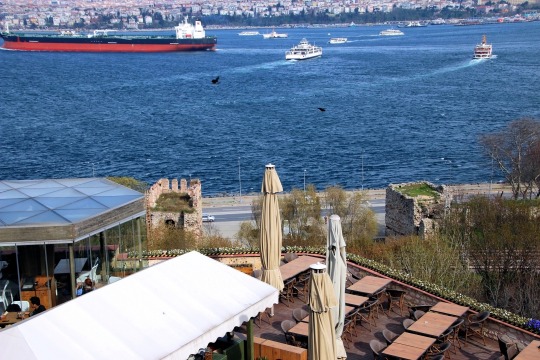
#Bosporus#Ocean#Ferries#Ship#Crude Oil Tanker#Cloudy Sky#Marmara Sea#Konyali Restaurant#Cafe#Topkapi Palace#Restaurant#Bosphorus Strait#Istanbul#Turkey
13 notes
·
View notes
Text
Tango A Crude Oil Tanker - click the photo to see more high quality photos and panoramas.
instagram
#sea#ship#vessel#gibraltar#merchant navy#merchant#oil and gas#oil industry#shipping#tanker#crude#crude oil#crudeoil#oil tankers#oiltanker#crude oil tanker#tango#tangoa#Instagram
3 notes
·
View notes
Photo
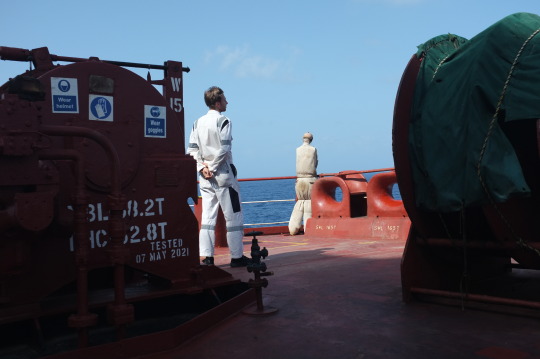


#Fujifilm x100#x100#Fujix100#vessel#tanker#crude oil tanker#life at sea#waves#ocean#indian ocean#selfportiat#sailor aesthetic#crude oil#main deck#merchant vessel#scandia gear
1 note
·
View note
Text
EDITORIAL: Nigeria’s massive oil theft scandal and lack of enlightened self-interest
EDITORIAL: Nigeria’s massive oil theft scandal and lack of enlightened self-interest
A super oil tanker on a mission to steal Nigeria’s crude oil early in August has rekindled national interest in illegal oil bunkering, which has led to massive revenue shortages that have significantly contributed to Nigeria’s present fiscal woes. The tanker, MT HEROIC IDUN, belonging to a Norwegian firm, entered Nigerian waters and headed for the Akpo Oil Field without any document or clearance…

View On WordPress
#Economic and Financial Crimes Commission (EFCC#H1#lucky irabor#Mele Kyari#Nigeria National Petroleum Company Limited (NNPC)#Nigeria Upstream Petroleum Regulatory Commission (NUPRC)#nigerian navy#Nigeria’s crude oil#NNPC#super oil tanker#the Chief of Defence Staff#Timipre Sylva
3 notes
·
View notes
Text
Three #Filipino fishermen died after their boat was hit by an oil tanker registered under the #MarshallIslands’ flag near #BajodeMasinloc (#ScarboroughShoal) in the #SouthChinaSea: Philippine coastguard said.
📸 Crude Oil Tanker Pacific Anna
-https://globalnation.inquirer.net/220185/commercial-ship-that-rammed-filipino-boat-killing-3-fishermen-hoists-foreign-flag-pcg
-https://cebudailynews.inquirer.net/531402/three-filipino-fishermen-dead-after-boat-rammed-in-south-china-sea
instagram
#Filipino boat#Crude Oil Tanker Boat#BajodeMasinloc#ScarboroughShoal#south china sea#Philippine coastguard#Marshall Islands#Pacific Anna#Instagram
0 notes
Text
Global Crude Transportation Market Is Estimated To Witness High Growth Owing To Increasing Oil and Gas Exploration Activities

The global crude transportation market is estimated to be valued at US$ 21.58 billion in 2023 and is expected to exhibit a CAGR of 6% over the forecast period 2023-2030, as highlighted in a new report published by Coherent Market Insights. The market is driven by the increasing oil and gas exploration activities, which require efficient transportation of crude oil from production sites to refineries.
Market Overview:
The crude transportation market involves the transportation of crude oil through various modes such as pipelines, tankers, and railcars. It plays a crucial role in ensuring the smooth flow of crude oil from production fields to refineries, where it is processed and converted into usable products such as gasoline, diesel, and jet fuel. The demand for crude oil is constantly increasing due to the growing population, urbanization, and industrialization, making efficient transportation a necessity.
Market Key Trends:
One key trend driving the growth of the crude transportation market is the increased use of pipelines. Pipelines are considered the most efficient and cost-effective mode of transporting crude oil over long distances. They offer several advantages, including higher capacity, lower operating costs, and reduced environmental impact compared to other modes of transportation. For example, the Keystone Pipeline system in North America has a capacity of transporting over 590,000 barrels of crude oil per day.
PEST Analysis:
Political: The political factors influencing the crude transportation market include government regulations and policies related to energy security, environmental protection, and infrastructure development. For instance, the approval or rejection of major pipeline projects often depends on political factors and public sentiment.
Economic: Economic factors such as oil prices, market demand, and economic growth influence the demand for crude transportation services. Higher oil prices incentivize increased production, leading to higher demand for transportation services.
Social: Social factors such as growing energy consumption, rising population, and changing consumer preferences impact the crude transportation market. The increasing demand for petroleum products from various industries and households drives the need for efficient transportation.
Technological: Technological advancements have significantly improved the efficiency and safety of crude transportation. For example, advanced pipeline monitoring systems and leak detection technologies help prevent accidents and minimize environmental impacts.
Key Takeaways:
1: The Global Crude Transportation Market Size is expected to witness high growth, exhibiting a CAGR of 6% over the forecast period. This growth can be attributed to increasing oil and gas exploration activities, which drive the demand for efficient transportation solutions.
2: In terms of regional analysis, North America is expected to be the fastest-growing and dominating region in the crude transportation market. The region has a well-developed pipeline infrastructure and is a major producer of crude oil. Furthermore, the shale oil boom in the United States has contributed to the increased demand for crude transportation services.
3: Key players operating in the global crude transportation market include ExxonMobil Corporation, Royal Dutch Shell, Chevron Corporation, BP plc, TotalEnergies SE, ConocoPhillips, China National Petroleum Corporation, Saudi Aramco, Rosneft Oil Company, Valero Energy Corporation, Phillips 66, Marathon Petroleum Corporation, PetroChina Company Limited, Kinder Morgan Inc., and Enbridge Inc. These players are focused on expanding their pipeline networks, investing in advanced technologies, and improving operational efficiency to meet the growing demand for crude transportation.
#Crude Transportation Market#Crude Transportation Market Insights#Crude Transportation Market Demand#Crude Transportation Market Forecast#Crude Transportation Market Analysis#Crude Transportation#pipelines#oil tankers#transportation#power generation#coherent market insights
0 notes
Photo
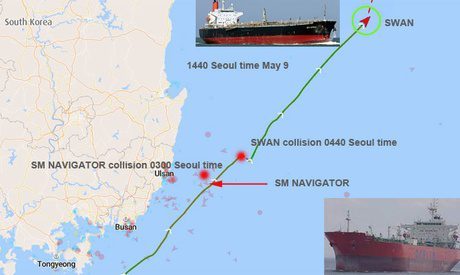
Two crude oil tankers collided Two crude oil tankers collided with fishing vessels 20-25 nm east off Ulsan, Korea, Japan sea, in the morning May 9. Crude oil tanker SM NAVIGATOR collided with 39-ton fishing vessel at around 0300 LT, fishing vessel remained under way and returned to home port under own power. SM NAVIGATOR is cruising off Ulsan since May 5, she continued cruising. Tanker left Ulsan on May 5, so she should be in ballast. Tanker SWAN collided with 34-ton Korean fishing vessel at 0440 Seoul time, fishing vessel was seriously damaged but managed to get to her home port under own power. SWAN was allowed to continue voyage, she’s bound for Nakhodka. The opinions expressed herein are the author’s and not necessarily those of News2Sea. #crude #oil #tankers #collided #Japan #sea https://www.news2sea.com/two-crude-oil-tankers-collided-with-two-fv-in-japan-sea/?utm_source=tumblr&utm_medium=social&utm_campaign=News2sea
0 notes
Text
#shipping#dark fleet#international shipping#tankers#crude oil#oil shipping#sanctions#trade sanctions#russian oil export#logistics#illegal trade
0 notes
Text
Russian oil tankers get ‘India safety cover’ after global sanctions: Report
Russian oil tankers get ‘India safety cover’ after global sanctions: Report
India is providing safety certification for dozens of ships managed by a subsidiary of top Russian shipping group Sovcomflot, official data showed, enabling oil exports to India and elsewhere after Western certifiers withdrew their services due to global sanctions against Moscow.
Certification by the Indian Register of Shipping (IRClass), one of the world’s top classification companies, provides…
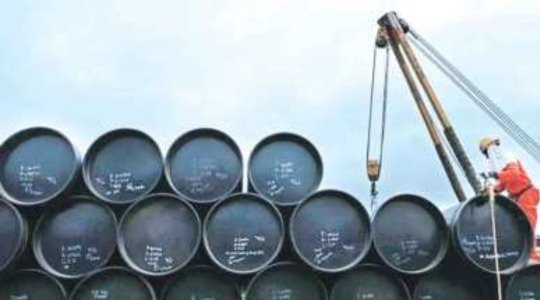
View On WordPress
0 notes
Text
Oil & Gas The Supply Chain
Oil & Gas The Supply Chain
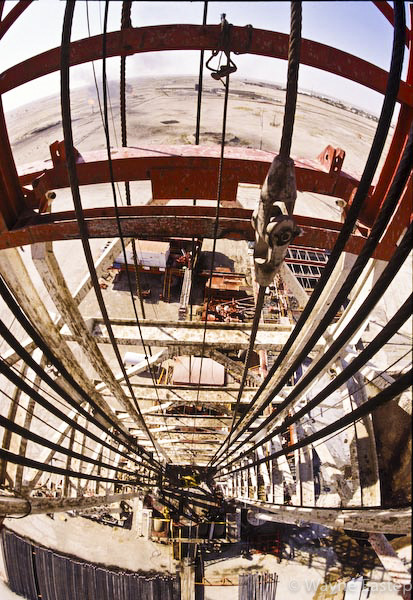
View On WordPress
#Alternative Energy#Crude Oil#Crude Oil Drilling Rig#Enegy#Engineer#Floating Production Storage#FPSO#Gas Pipeline#Geologist#Liquefied Natural Gas#LNG#LNG Pipeline#LNG Refinery#LNG Tanker#Offshore Drilling Platform#Oil & Gas#Oil and Gas Refinery#Oil Pipeline#Oil Storage#Petroleum Industry#Roughnecks#Sonar Imaging#SuperTanker#Upstream
1 note
·
View note
Text



Konyali Lokantasi Topkapi Sarayi 🍕🍝🏬🍹☕
#Bosporus#Konyali Restaurant#Topkapi Palace#Ocean#Cafe#Ferries#Crude Oil Tanker#Ship#Marmara Sea#Restaurant#Bosphorus Strait#Istanbul#Turkey
5 notes
·
View notes
Text
A group of indigenous protesters in Peru's remote Amazon region attacked two oil tankers with gasoline bombs apparently because they are angry about changes by the government to social oil funds, the operator of the vessels said on Wednesday.
A dozen crew members from both tankers, one of which contained 40,000 barrels of crude, were also kidnapped by the assailants, according to a statement from Canada-based PetroTal.
251 notes
·
View notes
Photo
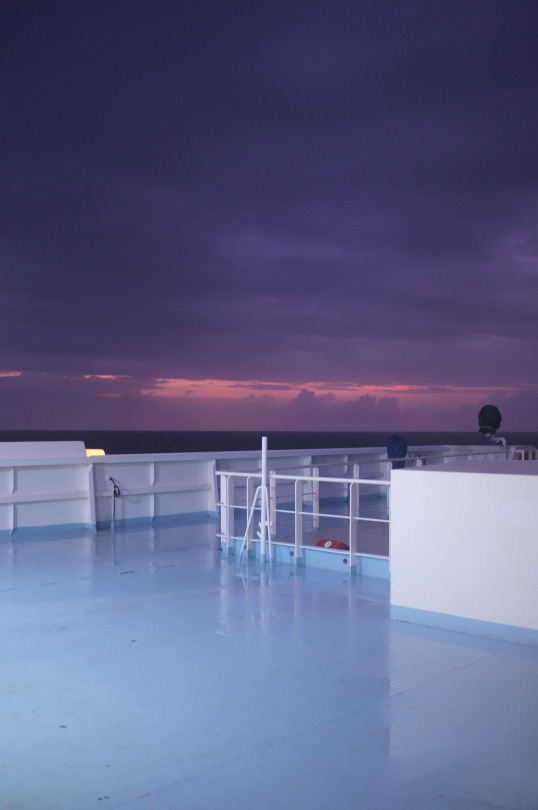
#fujifilm#x100#fujix100#night#india#indian ocean#mumbai anchorage#tanker#tanker vessel#captain bridge#merchant vessel#crude oil tanker
1 note
·
View note
Text
On March 2, she was gone. The Belize-flagged, British-owned bulk carrier Rubymar sank in the narrow water lane between the coasts of Yemen and Eritrea. The Rubymar was the first vessel that has been completely lost since the Houthis began their attacks on shipping in the Red Sea—and its demise, with 21,000 metric tons of ammonium phosphate sulfate fertilizer, spells ecological disaster. A similar substance—ammonium nitrate—caused the devastating explosion at the Port of Beirut in 2020. It had been stored there after being abandoned on a vessel and authorities intervened to prevent an environmental disaster.
Because the Houthis have no regard for the environment, there are likely to be more such disasters. Indeed, groups set on destruction could also decide to attack the carbon storage facilities now beginning to be built underneath the seabed.
For two weeks after being struck by a Houthi missile in the Red Sea, the Rubymar clung to life despite listing badly. The damage caused by the missile, though, was too severe. At 2:15 a.m. local time, the Rubymar disappeared into the depths of the Red Sea. The crew had already been rescued by another merchant vessel that had come to the Rubymar’s aid, but there was no way anyone could remove its toxic cargo.
The ship’s owner had tried to get it towed to the Port of Aden—where Yemen’s internationally recognized government is based—and to Djibouti and Saudi Arabia, but citing the environmental risk posed by the ammonium phosphate sulfate, all three nations refused to receive it.
Now enormous quantities of a hazardous substance are about to spread into the Red Sea. IGAD, a trade bloc comprising countries in the Nile Valley and the Horn of Africa, points out that the Rubymar’s fertilizer cargo and leaking fuel “could devastate marine life and destroy coral reefs, sea life and jeopardize hundreds of thousands of jobs in the fishing industry as well as cut littoral states off from supplies of food and fuel.”
Not even shipping’s option of last resort, salvage companies, seems available. “The salvage companies that normally recover vessels are reluctant to go in,” said Cormac Mc Garry, a maritime expert with intelligence firm Control Risks. That’s because salvage ships and crews, too, risk being targeted by Houthi missiles. “If a salvage company knows it’s likely to be targeted, it will hesitate to take on the task. It has a duty of care for its crew,” said Svein Ringbakken, the managing director of the Norway-based maritime insurance company DNK.
It was only a matter of time before a Houthi missile brought down one of the many tankers and bulk carriers that still traverse the Red Sea every day. (In the first two months of this year, traffic through the Red Sea was down by 50 percent compared to the same period last year.) “The Houthis have no regard for life and even less for the environment,” Ringbakken said. “They shoot missiles at ships even though they know that there are humans and hazardous cargo on them.”
For years, the Houthis allowed an oil supertanker ironically named Safer that was moored off the coast of Yemen to rust away even though she was holding more than 1 million barrels of crude oil. By the beginning of last year, the Safer was close to disintegration: an event that would have cost hundreds of thousands of Yemenis their livelihoods because it would have killed enormous quantities of fish. Indeed, had the Safer’s oil leaked, it would even have forced the Houthi-controlled ports of Hudaydah and Saleef to close, thus preventing ordinary Yemenis from receiving food and other necessities.
It would, of course, also have caused permanent damage to all manner of marine life, including coral reefs and mangroves, in the Red Sea. Then the United Nations pulled off an almost impossible feat: It got Yemen’s warring factions, international agencies, and companies to work together to transfer the oil off the Safer. Disaster was averted. “It was a massive undertaking,” Ringbakken noted. “But for years and years and years, the Houthis were adding impediments against this undertaking, even though the Safer was sitting just off the Yemeni coast.”
Indeed, maritime terrorism itself is not new. “Besides guerrillas and terrorists, attacks have been carried out by modern day pirates, ordinary criminals, fanatic environmentalists, mutinous crews, hostile workers, and foreign agents. The spectrum of actions is equally broad: ships hijacked, destroyed by mines and bombs, attacks with bazookas, sunk under mysterious circumstances; cargos removed; crews taken hostage; extortion plots against ocean liners and offshore platforms; raids on port facilities; attempts to board oil rigs; sabotage at shipyards and terminal facilities; even a plot to steal a nuclear submarine,” researchers at RAND summarized—in 1983.
Now, though, the Houthis have upped the nihilism, and unlike the guerrillas, terrorists, and pirates of the 1980s, they have the weaponry to cause an ocean-going vessel to sink. The joint U.S.-U.K. military operation against the Houthis has failed to deter the Iranian-backed militia’s attacks; indeed, not even air strikes by U.S. and U.K. forces have convinced the Houthis that it’s time to stop. On the contrary, they’re escalating their attacks. They do so because they’re completely unconcerned about loss of life within their ranks or harm to their own waters.
It’s giving them a global platform. That, in turn, is likely to encourage other militias to also attack ships carrying toxic substances—even if it ruins their own waters. The local population is hardly in a position to hold a militia accountable. Indeed, militias interested in maritime terrorism could decide that the world’s growing sea-based infrastructure is an attractive target. And there’s a new form of sea-based infrastructure they could decide to make a preferred target, not just because it’s set for explosive growth but because attacking it would guarantee a global platform: CO2 storage.
With the world having failed to reduce its carbon-dioxide emissions enough to halt climate change, CO2 storage has become an urgent priority. Through this technique, carbon dioxide can be captured and buried underground, typically underneath the ocean. Norway has, for example, begun auctioning out licenses for CO2 storage exploration on its continental shelf. So has Britain. The United States has 15 carbon-storage sites, and another 121 are being developed. Even Big Oil has discovered carbon storage. ExxonMobil is buying offshore blocks to use for carbon storage instead of oil drilling.
Carbon storage sites are, of course, designed to withstand both natural perils and man-made attacks, but that won’t prevent destructive groups—especially ones backed by a powerful state—from trying. And because groups like the Houthis are so unconcerned about all forms of life, it won’t matter to them that releasing concentrated CO2 would cause extreme harm to the planet—including themselves. Even a tiny carbon-storage leakage of 0.1 percent per year can lead to additional CO2 emissions of 25 giga-tonnes, researchers have established.
Until recently, sea-based infrastructure was only lightly guarded, because it was in everyone’s interest that it worked. The sabotage of Nord Stream and various other pipelines and undersea cables over the past two years have demonstrated that such peacefulness can no longer be taken for granted. The new CO2 sites will need not just AI-enhanced monitoring but regular patrolling to communicate to potential attackers that it’s not even worth attempting an attack.
And for now, attacking merchant vessels remains a promising and economical strategy for the Houthis and their ilk. It doesn’t seem to matter that ammonium phosphate sulfate will soon be poisoning Yemeni waters and thus depriving locals of their livelihoods. Indeed, other bulk carriers and tankers may soon join the Rubymar on the bottom of the sea, poisoning the future for even more Yemenis.
For the Houthis, what matters is not the outcome: It’s the attention. That’s what makes them such a vexing problem for the U.S. Navy and other navies, shipowners, maritime insurers, and especially for seafarers. But there is another group that should be just as worried about the rampant insecurity on the high seas: ocean conservationists.
There is, in fact, a woman with an unsurpassed green platform who could make the growing scourge of maritime terrorism her new cause. (Nearly) everyone would thank you, Greta.
33 notes
·
View notes
Photo

This panel and so many others just like it are in danger due to a proposed Hydrocarbon Highway through Nine Mile Canyon in Utah. From the Nine MIle Canyon Coalition:
The Bureau of Land Management (BLM) is considering a proposal by Duchesne County to construct a Hydrocarbon Highway through Gate Canyon, connecting the Uinta Basin to Nine Mile Canyon. The intent of the project is to facilitate trucking of Uinta waxy crude oil and expand oil production in the Basin. The project would obliterate Gate Canyon, removing its meanders and filling the canyon with over 180 feet of dirt. Once completed, it is anticipated there will be one oil tanker every three minutes through Nine Nile Canyon. Full article here: https://etvnews.com/hydrocarbon-highway-threatens-historic-nine-mile-canyon/
The BLM is taking public comments on the proposal through Feb. 8. Project description can be found and comments made here: https://eplanning.blm.gov/eplanning-ui/project/2022551/510.
326 notes
·
View notes
Text




On January 5th 1993 the Liberian registered oil tanker Braer hit rocks off the Shetland Islands.
At 05.19 hrs on Tuesday 5th January 1993, Lerwick coastguard were advised that a tanker, the Braer, en route from Mongstad, Norway to Quebec, laden with 85,000 tonnes of Norwegian Gullfaks crude oil, had lost engine power but was in no immediate danger. She had sailed from the Norwegian port on 3rd January intending to pass through the northerly Fair Isle Strait before heading into the open Atlantic towards her destination.
The journey up to this point had been fraught with problems as first four steel pipe sections which had been secured on the port side after deck broke loose and were dangerously rolling about on deck. Later on the 4th, after routine adjustments to the auxiliary boiler, difficulty was experienced in re-igniting it. This boiler was needed to pre-heat the heavy engine oil used to run the main engine and so the main engine was switched to lighter diesel fuel until the problem with the auxiliary boiler could be resolved. The final straw in this litany of problems occurred when seawater contamination in the diesel fuel stopped the engine and caused the main generator to fail at 4:40am on 5th January. It was later established that fuel lines had been damaged by the loose pipe sections allowing seawater to penetrate the fuel lines and contaminate the diesel fuel.
The ship was carrying twice as much oil as the official figure for what the infamous Exxon Valdez had spilled in Prince William Sound Alaska, just four years earlier and on the same latitude of 60 degrees north. Not surprisingly, reports about an iniment environmental disaster were extremely fearful, particularly when the ship became a total loss and the gale-driven fumes could be smelt as far away as Bressay.
By the following morning the bay was full of oil and the slick was spreading north and south from the bay along the Shetland coast. Critically however, the oil aboard, recently recovered from the North Sea oilfields, was not as heavy as crude oil from other oilfields and breakers that were smashing the Braer to pieces were, in fact, already helping to disperse the oil very quickly. The spillage was still enormous and very damaging but thankfully the final environmental impact was much less than was initially feared. The ship, in it’s very exposed position, finally broke on January 11th and most of it disappeared beneath the surface. Only the upturned bow was visible as a reminder of the loss of the ship and eventually, around seven years later, it too vanished beneath the waves.
Reports state only 1% of the oil washed up on the beaches, but there was still a large environmental impact. Over 7500 birds died from the spill and large amount of marine life was impacted as well.
Some 95 million USD were paid out in claims by those impacted by the spill.
22 notes
·
View notes